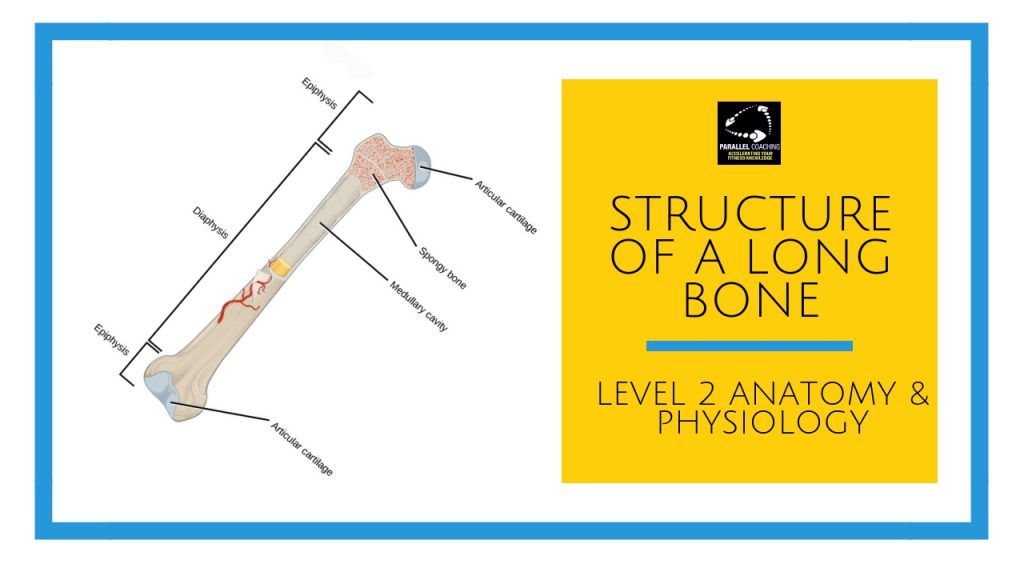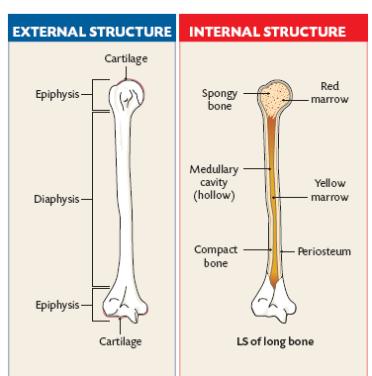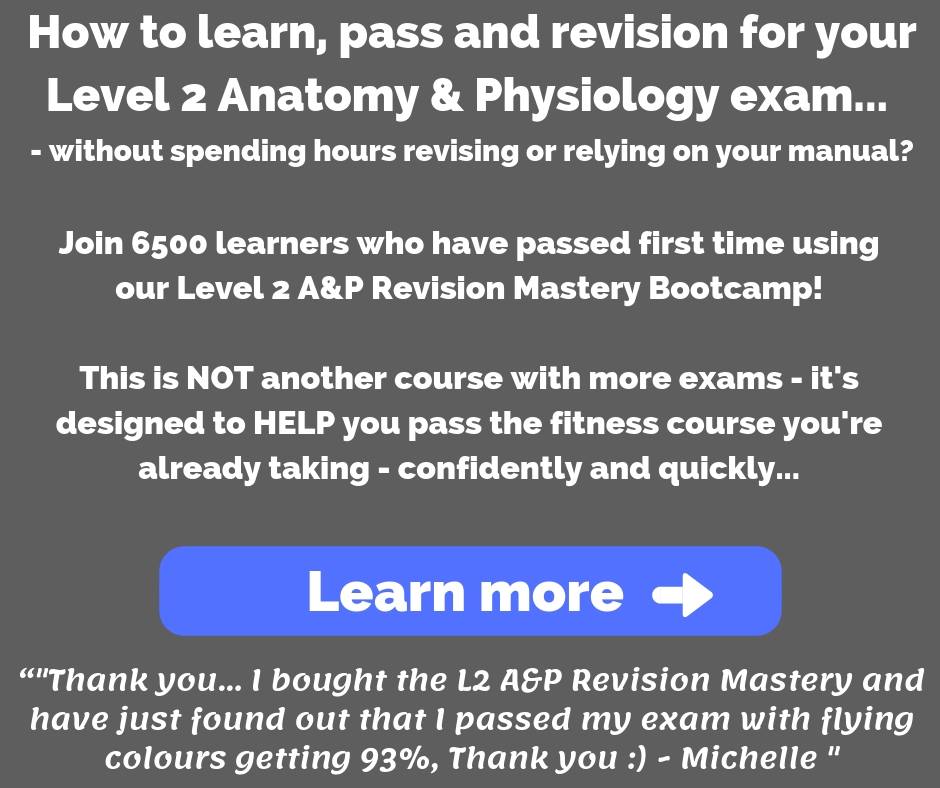When studying for your Level 2 Anatomy and Physiology exam, you will need to know a few key items about the structure of a long bone. In this blog, you will learn three sections of knowledge that will help you pass your exam:
- Know that the Long bone is one of five types of bone
- Learn the External structure of a long bone and associated terminology
- Learn the Internal structure of a long bone and associated terminology
First Up, PRESS PLAY
and take notes as you go through today’s quick tutorial on the Structure of a Long bone. Then scroll to the bottom of this blog for three Level 2 Anatomy and Physiology Mock Questions all about the Structure of a Long Bone!
The Types of Bones in the Body
There are 5 types of bones in the body. Each has a unique function and purpose in the body:
- Flat Bones: Main function is to protect internal organs and provide attachment points. i.e. Ilium
- Long Bones: Main function is to support weight and facilitate movement. i.e. Femur
- Short Bones: Main function is support and stability with little to no movement; they are cube-shaped. i.e. Tarsals
- Sesamoid Bones: Main function is to reinforce tendons, and characterized by being embedded within a tendon. i.e. Patella
- Irregular Bones: Main function is widely varying, as their complex shapes don’t fit the other four categories i.e. Vertebrae
Key Fact
The Long Bone is the most common type of bone in the human body
The Structure of a Long Bone: Labelled Image
Long bones are the most common bones found in the human body. They are composed mostly of compact bone, and are roughly cylindrical in shape with enlarged ends filled with spongy bone.
As part of your Level 2 Anatomy and Physiology Exam, you need to be aware of the structure of a long bone and know the terminology associated. Read through the following facts about the Structure of a Long Bone and then quiz yourself below
Structure of a Long Bone Terminology
Diaphysis: This is the shaft of the long bone, and makes up the length of the bone. It is roughly cylindrical in shape, and is composed of a thick layer of compact bone surrounding the medullary cavity.
Epiphysis: This is the name given to the two ends of the bone (the nobbly bit on the ends). Each epiphysis (also called the head of the long bone) is covered in articular cartilage to allow bones to slide past one another more easily. The interior of epiphyses is filled with spongy bone, and is differentiated from the interior of the diaphysis by the epiphyseal line (in adults) or plate (in children).
Epiphyseal Plate/ Line: This is the zone where the diaphysis meets the epiphysis and is the area where bone growth takes place.
The Medullary Cavity: This is the space inside the diaphysis, and can also be called the yellow marrow cavity. In infants it is called the red marrow cavity, as it is filled with newly forming red blood cells.
Articular Cartilage: This cartilage covers the end of the long bones, to allow smooth articulation at the joint and protect the bone from friction damage.
Periosteum: A protective layer of fibrous connective tissue that covers the diaphysis.
Key Fact
You need to know the outside structure of a long bone consists of the Diaphysis and the Epiphysis, and understand each of the key features of the inside structure of the long bone (including the epiphyseal plate and the medullary cavity)
To test your knowledge scroll to the bottom of this blog for 3 Level 2 Anatomy and Physiology Mock Questions all about the Structure of a Long Bone!
The fastest way to accelerate your learning and revision is to check out the L2 Anatomy and Physiology Revision Mastery Series. Here all 8 modules are covered in 8x full HD video tutorials, with accompanying cheat sheet to make revision even easier again and test your knowledge as you go! I’ve also packed in 5 BONUSES for you as well, click the link below:
L2 A&P Revision Mastery Bootcamp
Now Test Yourself:
Level 2 Anatomy & Physiology Mock Questions below:
[NOTE: The answers are below the 3rd questions]
QUESTION 1: What is the most common type of bone in the human body?
A. Short Bone
B. Long Bone
C. Compact Bone
D. Irregular Bone
QUESTION 2: What is the name given to the protective connective tissue on the outside of the diaphysis?
A. Endosteum
B. Perimysium
C. Periosteum
D. Epiphysis
QUESTION 3: What is the Epiphyseal plate?
A. The shaft of the long bone
B. The middle of the diaphysis that stores bone marrow
C. The end section of a long bone
D. The zone where the diaphysis meets the epiphysis
Mock Question Answers
Question 1= B, Question 2 = C, Question 3 = D
If you want more mock questions like this, then you can download 88 Level 2 Anatomy and Physiology mock questions here: DOWNLOAD NOW
Dedicated to your learning,
Hayley
Parallel Coaching
P.S. You can also find us on the following platforms:
Instagram: https://www.instagram.com/parallelcoaching
Facebook: https://www.facebook.com/ParallelCoaching
Twitter: https://twitter.com/ParallelCoach
YouTube: http://bit.ly/2F1Z1bs



